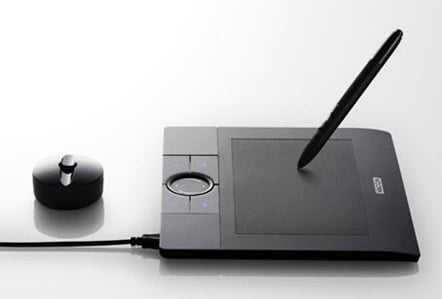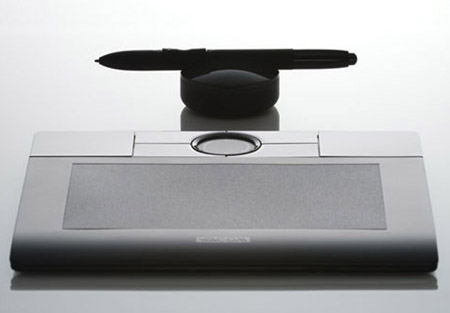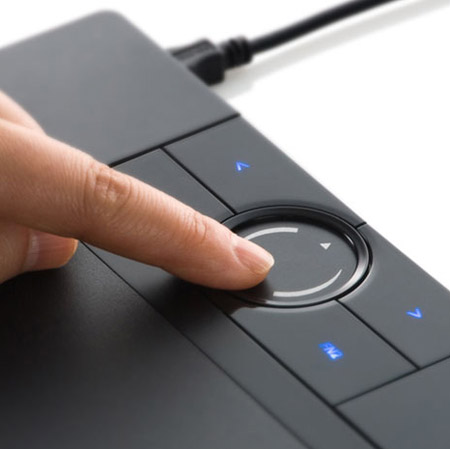Original URL: https://www.theregister.com/2007/08/15/review_wacom_bamboo/
Wacom Bamboo tablet
Nothing difficult to swallow about this
Posted in Personal Tech, 15th August 2007 16:38 GMT
Review The latest in Wacom's range of graphics tablets is the stylish and compact Bamboo model, which in addition to assisting with hand-written notes and memos, is also designed to replace the more standard-issue mouse.

Wacom's Bamboo: at 20 x 18.6 x 1.07cm, it doesn't take up much space
This ultra-light, affordable tablet supersedes its predecessor, the Intuos3, with its portability and streamlined design. Looks come at the expense of size, however, as the Bamboo is roughly A5 in size. It's also not as attuned for serious artwork as some of the company's larger Intuos models. That said, it is 16:10 ratio, and with many users using widescreen monitors, to find a 16:10 tablet for this price is a godsend.
One problem with tablets of this size is that the range of the active magnetic area that the cursor 'locks on' to is very small. So, for example, if you were to draw in a Photoshop document from a far distance having zoomed out, the cursor would automatically create 'joins' between the key points of the stroke, creating an ugly zigzag effect. This appears to have been largely nullified in the Bamboo, so you get a smooth, flowing stroke, even at great distances.
The Bamboo sports a sleek black frame with matte finish on the drawing area, in contrast to the Intuos' glossy finish. If you're used to an Intuos model, the matte can seem a little coarse, and initially makes the pen pressure appear duller - a problem easily overcome by resetting the pressure to your liking.

Wacom's Bamboo: the active area measures 14.7 x 9.2cm
The Bamboo has four function keys, which make it easy to set keyboard shortcuts when the keyboard itself is out of range. While this was a useful tool on the larger Intuos models, the size of the tablet makes the keys seem a little superfluous as the keyboard is unlikely to be placed too far out of reach.
The Bamboo has an iPod-reminiscent dial for scrolling and zooming - replacing the two touchstrips on the Intuos 3. It's incredibly sensitive to the touch, and can be a little erratic and imprecise, sure to be an annoyance to even the most steady handed of artists.
Wacom has reduced the stylus on the Bamboo by more than 25 per cent, and has gone for a traditional "pen" design, while still retaining all the classic features - such as the double-sided switch, which can be set for a variety of functions, most typically double-click and right-click, and can now be used for 'drag', or the spacebar function in Photoshop, and the top of the stylus still acts as an eraser.

The express keys are fully customisable for frequently used function
Perhaps the Bamboo's biggest improvement over the Intuos models, and indeed most other tablets, is the addition of a removable USB cable, doing away with all the troubles caused by stowing the tablet with a lead poking out. Any tablet user will tell you this is vital in ensuring the safety of the machine and reducing wear and tear.
Verdict
For anyone wanting to dabble in graphic design/freehand draughtsmanship, or someone looking to break into the realm of tablet use, the Bamboo is a decent option. It is far lighter and less chunky than the Intuos models, and can be stowed easily. However, the size does make detailed drawing a little problematic, and even the most steady-handed of artists may be defeated by the wildly sensitive cursor. This is all small fry, however, compared to the benefits of the removable USB lead. What a relief.